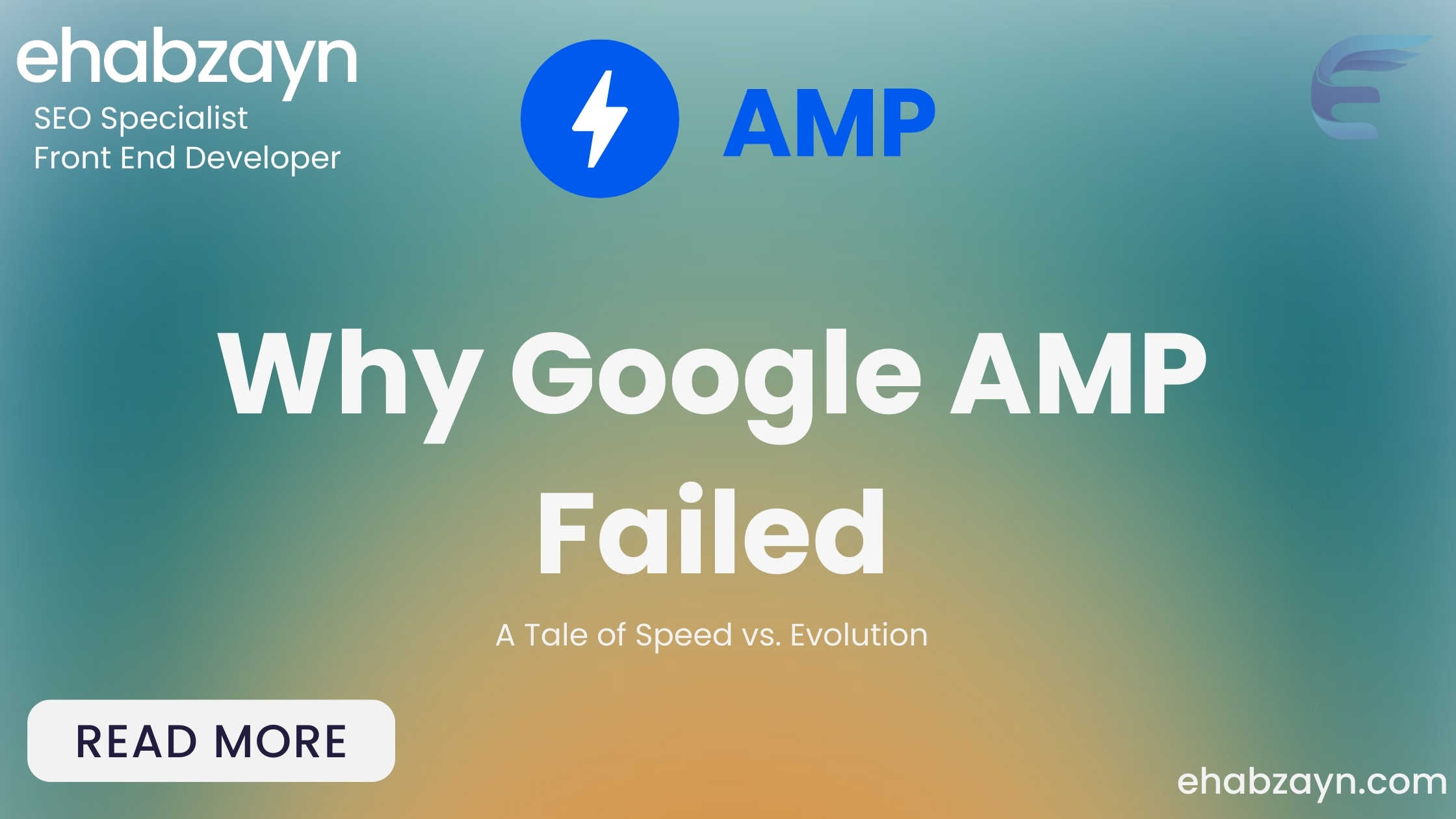Call us now:
Why Google AMP Failed ?
Why Google AMP Failed: A Tale of Speed vs. Evolution

Once upon a time, Google AMP (Accelerated Mobile Pages) was introduced with much fanfare. It promised lightning-fast loading speeds for mobile users and was marketed as a game-changer for publishers and website owners. Yet, here we are in 2025, and AMP is, a shadow of its former self. So, what went wrong? Let’s dive into the reasons why AMP failed and learn a lesson or two along the way.
1. Prioritizing Speed Over User Experience
Speed is undeniably important in today’s fast-paced digital world, but speed alone doesn’t make a great experience. AMP’s primary focus was on loading pages quickly by stripping them of non-essential elements. While this was a win for speed lovers, it often came at the cost of user experience. Essential design features, interactive elements, and even some advertising formats were sacrificed on the altar of speed. Users may have gotten to the page faster, but once they were there, the experience was often underwhelming.
2. Lack of Adaptation to Technological Evolution
The web is a constantly evolving space. While Google AMP came in strong, it didn’t evolve fast enough to keep up with modern web technologies. Frameworks like PWA (Progressive Web Apps) and responsive design tools became increasingly popular, offering faster speeds without the restrictive ecosystem of Google AMP. Developers and businesses naturally gravitated towards solutions that were more flexible and aligned with the latest trends.
3. A Walled Garden Approach
One of AMP’s most criticized aspects was its “walled garden” nature. Content had to adhere to AMP’s strict guidelines, making websites overly dependent on Google’s infrastructure. This control didn’t sit well with publishers who wanted more freedom over their content and monetization strategies. It felt like trading independence for a chance at higher rankings—a deal that lost its charm as other options became available.
4. SEO Impact Overstated
Google initially gave Google AMP a significant push in search rankings, making it seem like a must-have for SEO. However, as time went on, the algorithm evolved, and fast-loading, mobile-friendly websites that weren’t AMP-compliant started performing just as well. This diminished one of AMP’s primary selling points, leaving many to wonder if the effort to implement AMP was even worth it.
5. The Rise of Core Web Vitals
Enter Core Web Vitals, Google’s new standard for measuring user experience. These metrics prioritize not just speed but also interactivity and visual stability. Unlike AMP, Core Web Vitals allowed website owners to improve their sites without being locked into a specific framework. Suddenly, AMP wasn’t the only game in town when it came to improving mobile performance.
6. Limited Customization Options
Google AMP’s rigidity was another nail in its coffin. While it worked well for straightforward blog posts and news articles, it struggled to support more complex or customized web pages. Businesses with unique branding and design needs often found AMP’s limitations too restrictive, forcing them to look elsewhere.
7. The Shift in User Expectations
User expectations have evolved. Today, people expect more than just fast loading speeds; they want engaging, interactive, and visually appealing experiences. AMP’s bare-bones approach simply couldn’t keep up with these changing demands. By focusing too heavily on speed, AMP failed to consider the broader aspects of what makes a website truly engaging.
Conclusion: A Lesson in Balance
Google AMP’s rise and fall is a textbook example of how prioritizing one aspect of user experience—in this case, speed—to the detriment of others can backfire. It also highlights the importance of staying adaptable and responsive to technological changes. While AMP’s intentions were noble, its execution and inability to evolve ultimately led to its decline.
As web developers and businesses, the key takeaway here is simple: balance is everything. Speed matters, but it’s only one piece of the puzzle. User experience, flexibility, and staying in tune with the latest technologies are just as critical. After all, a fast car is only useful if it’s heading in the right direction.
This is Was Why Google AMP Failed If you found this article helpful, don’t forget to share it with others. For more tips, check out our certifications, and feel free to leave your questions in the comments or on our FAQ page. I’ll respond to you promptly!
